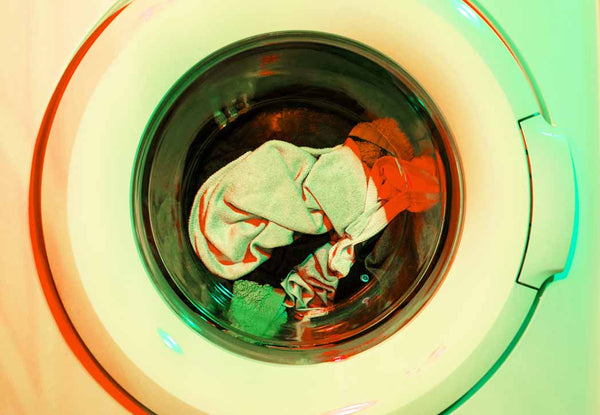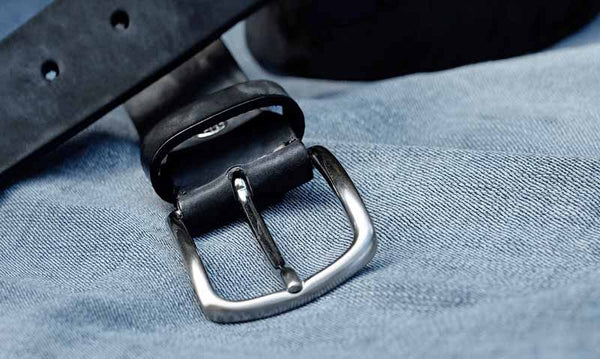
Ruined T-shirt? The 5 most classic motifs
Luca BensiYou have a favorite t-shirt, you care about it a lot, you wear it as often as you can and you know that having it on you changes your day.
You wish it would last forever.
Then one day comes and… you find it ruined!
A hole, a seam, the print disappearing, the fabric wearing out, etc.
You look at the sky and curse someone indefinite, because someone's fault will certainly be.
Today we tell you the 5 "typical" reasons that could ruin your t-shirt:
1. THE WASHING MACHINE

Oh yes... he could have his faults.
The clothes inside the washing machine bang from side to side, rub against each other, turn and turn inside the drum.
Then imagine what happens during the spin cycle .
Even the basket itself could cause damage: since it is made of perforated steel, the holes may become damaged in some places over time.
In this case there is the risk that the garments will remain hooked during washing and become punctured.
Another risky element in this sense are the zips on sweatshirts and trousers, which could cause the same problem.
Each wash wears out the fabric of our t-shirt and rubbing also wears out the print.
Without demonizing the washing machine, which is certainly useful in our daily lives, it may be important to perhaps adopt a few more precautions.
We suggest some of them below:
How to solve the problem:
- use a low spin
- wash clothes at low temperatures
- Every now and then pass a piece of ruined fabric through the basket to check that it does not get stuck in the holes (if this happens it means that the basket is ruined)
- use the program and temperature suitable for washing your garment (you can find the instructions on the labels or, if you have doubts, ask the brand directly!)
- wash clothes when it is really necessary (often unconsciously we wear clothes once and then put them to wash)
- wash the inside-out clothes
2. THE DRYER
It is certainly comfortable and takes away a lot of worries.
But it is perhaps one of the most dangerous enemies for your clothing.
It works like the washing machine with its wonderful rotating drum, with all the "risks" that this process could entail (as you discovered above).
The clothes The clothes dry thanks to a heat source which warms the air and introduces it into the drum through a fan.
The heat emitted necessary to dry the garment also tends to deform and wear out the fabric, and strongly risks ruining the print on your favorite t-shirt.
How to solve the problem:
- winning solution: avoid, if you can, the dryer (sometimes we use it more for convenience than necessity) and dry the clothes outdoors, spreading them out well (this will avoid ironing. Win-Win strategy!)
- if you really can't do without it because it's impossible to dry in your house, try to use the program suitable for the clothes you've placed in the drum.
3. DETERGENT

Detergents that are too aggressive damage the fibers and fabrics.
It's not an urban legend and it happens especially with natural fiber fabrics.
Bleach is one of the most dangerous, especially when we think about the print on your t-shirt.
How to solve the problem:
- use delicate ecological detergents, respectful of the environment and fabrics
- use the right amount for each wash
- always wash your clothes inside out
4. THE BELT (and similar)

Have you noticed that the holes on your t-shirt are often located low on the bottom of the t-shirt, around waist height?
The belt buckle is often the cause of these holes.
Even the shoulders of backpacks or the straps of bags rub on the fabric and tend to wear it out.
How to solve the problem:
- you should accept this risk, perhaps trying to be a little more careful when using it (see the next point)
- repair the holes instead of throwing the shirt away
5. “MISTREATED” ITEMS

The fast fashion "culture" has transformed the t-shirt into a garment costing a few euros, encouraging the unconscious bad habit of mistreating it, because we often no longer recognize its value.
Over time he is like a cornered boxer, he resists as long as he can but sooner or later he will have to succumb.
Subconsciously we feel like treating our t-shirt "badly", forgetting to take care of it and keep it as good as other items.
Olympic throws in the wardrobe, random creasing, contortionism in taking off the garment and over time the shirt is tortured to perfection.
In shops, at fairs and at events over the years we have witnessed scenes in which t-shirts are put on in the most absurd ways, putting the fabrics to the test.
How to solve the problem:
Treating our leaders well is essential.
Taking care of them on a daily basis will allow us to make them last longer over time:
- fold them well
- spread them with the necessary precautions
- put them on and take them off carefully
CONCLUSIONS
We have presented you with the 5 most typical reasons why a t-shirt could be ruined.
There can obviously be many other causes, including bad luck, but we have limited ourselves to the most frequent cases to help you pay more attention.
On the identity cards of our products we have long included the classic "grandmother's advice" to follow to make your t-shirt or sweatshirt last as long as possible
Always remember to keep your card when purchasing our products; Besides being cool, it's a very useful reminder! :-)

Fabrics are not indestructible, we must accept that they too reach the end of their life, even when the quality is high.
As for the holes, a small repair can solve the problem and make your garment last for a long time.
If your t-shirt has lived its entire life, it is also right to let it go , informing yourself carefully with your municipality to find the best way to dispose of it.

